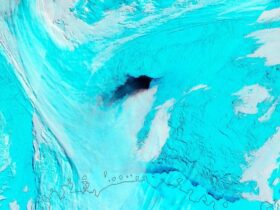The Spring of 2025 begins in a great way for stargazers, as the Lyrids and Eta Aquariid meteor showers will soon be dominating the night sky. The celestial show will begin in mid-April and last until the end of May. The scientific explanation for the Eta Aquariid meteor shower is simple: Earth will be passing through the dusty trail left behind by Comet C/1861 G1 Thatcher.
In a nutshell, what you can expect from the Lyrids and Eta Aquariid meteor showers is this: roughly 10–20 meteors per hour at the celestial event’s peak. If you’re lucky enough and the sky is clear, you might get a surprise “Lyrid fireball,” meaning a bright and long-lasting streak.
How to spot the Eta Aquariid and Lyrids meteor showers?
The best way to make sure you’ll get to admire the two forthcoming meteor showers in all their glory is to stay awake after midnight and before dawn and choose a spot away from city lights. Of course, the sky needs to be clear as well, with no clouds blocking your view.
While the Lyrids meteor shower is scheduled by nature to end on April 29th, the Eta Aquariid will last even longer: until May 28th. During this celestial event, Earth will cross the dusty debris left by Halley’s Comet. Even if that is a spooky name for a comet, you should definitely be eager to spot those illuminating meteors in the night sky! Around 20–30 meteors per hour will emerge during this event in the Southern Hemisphere. On the other hand, you’ll still get a decent celestial show if you live in the Northern Hemisphere, but not be quite as good as the one unfolding for the people who watch from the Southern Hemisphere.
Nature never ceases to amaze us, so don’t forget to have your tickets prepared for the imposing celestial show granted by the Lyrids and Eta Aquariid meteor showers in April and May 2025!












Leave a Reply